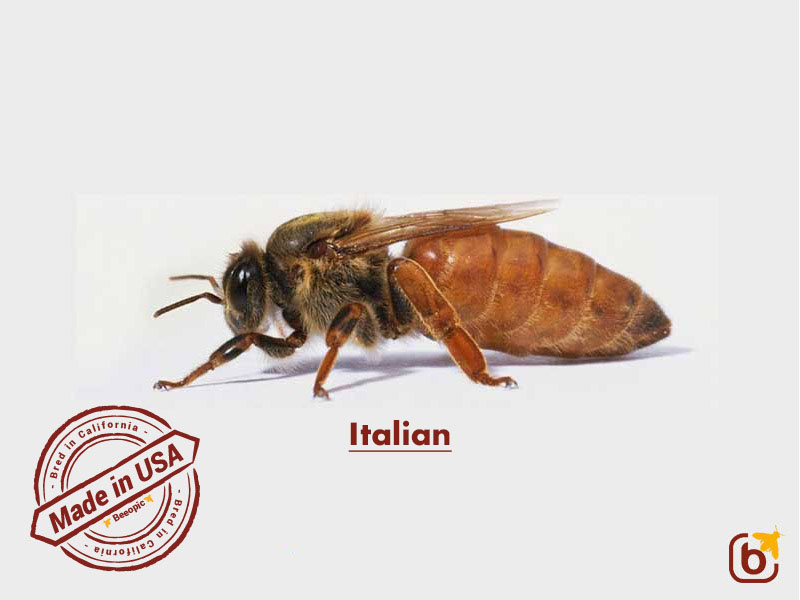The Italian bee (Apis Mellifera Ligustica)
The Italian bee, also called the yellow bee, is one of the four races of Central Europe (among the carnolian, the caucasica and black ones). Within this Italian race, there are three types of bees, differentiated by their colors: leather-yellow, bright yellow and lemon yellow.
Physical Attributes
– Color: the Italian bees are yellow. The brighter the color, the younger the bee.
– Size: its abdomen is larger than its upper body.
– Abdomen: has a spikier end than other breed.
– Tongue: is about 0.25 inches.
The advantages of working with Italian bees
The yellow bees are very gentle and therefore easy to work with,
except in case of danger of course. Beekeepers tend to work in their
apiary without even wearing a veil.
The Italian race of bees are known not only for their high honey
production but also for their high brood production, two of the best
assets bees can have. It make them ideal to use for bundles of
honeybees, propolis production and royal jelly production.
Last but not not least, the Italian bees have incredible adaptability
skills across not just Europe (Italy, France…) but also the whole world,
from Chile to New Zealand.
The downsides
However, the yellow bees do have some drawbacks: because of the high number of bees per colony, they tend to either swarm or die from starvation. Also, they are a fragile race and may have a tough time surviving through winter, making it a necessity for beekeepers to feed them regularly. The last element to consider can resolve to pillage when facing difficult times.

